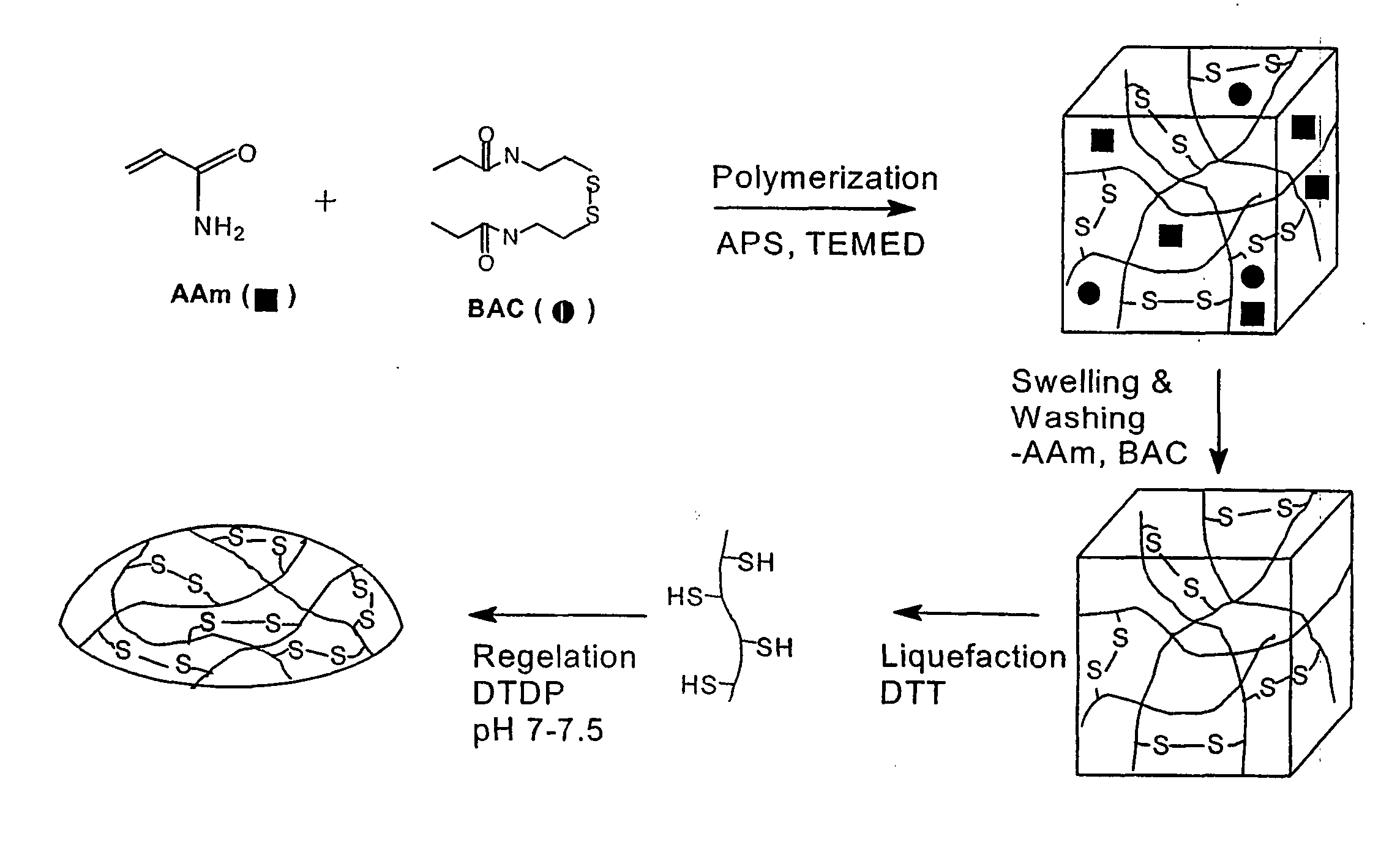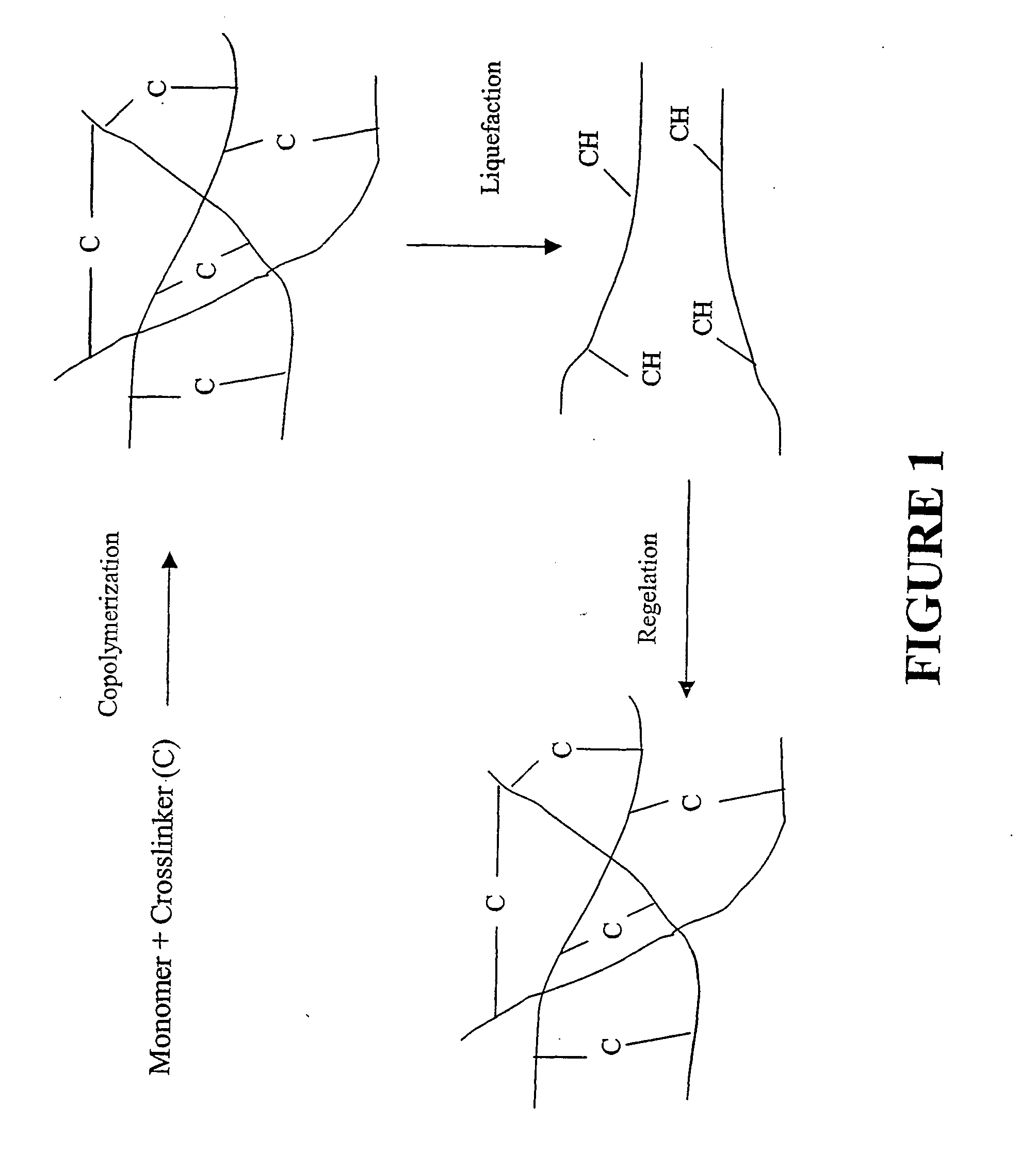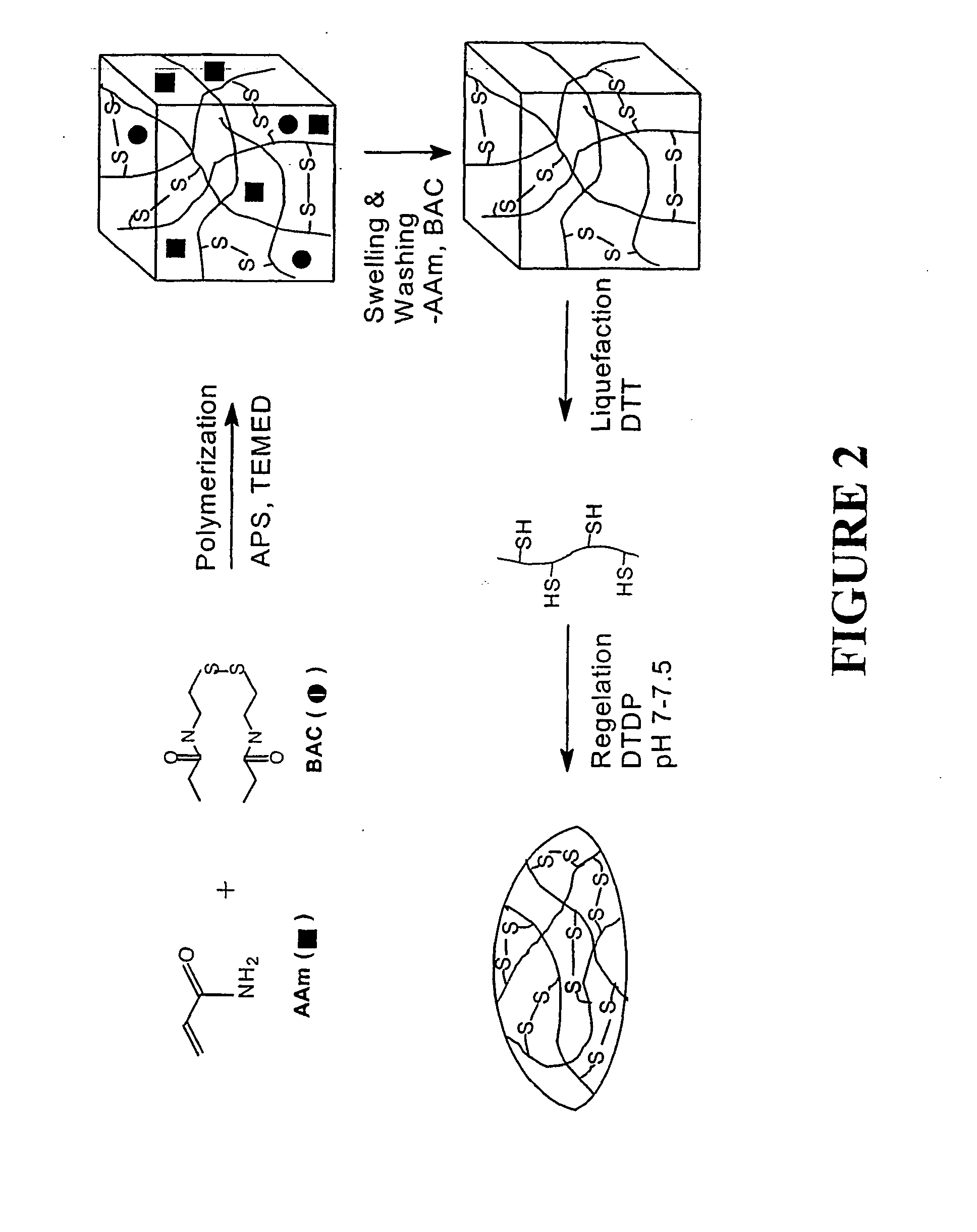Hydrogel Nanocompsites for Ophthalmic Applications
a technology of ophthalmic applications and nanocomposites, which is applied in the direction of capsule delivery, drug compositions, prosthesis, etc., can solve the problems of poor vision, loss of accommodative capacity of patients who must rely on standard iol after surgery, and poor vision of patients, so as to reduce the cross-linked hydrogel
- Summary
- Abstract
- Description
- Claims
- Application Information
AI Technical Summary
Benefits of technology
Problems solved by technology
Method used
Image
Examples
example 1
Acrylamide / BAC Hydrogels
Synthesis of Polyacrylamide / BAC Hydrogels
[0053] Varying compositions of hydrogels were synthesized by reacting acrylamide (Aam) with BAC at acrylic mole ratios of 98 / 2, 96 / 4, and 94 / 6 at 5% (w / w) in 25% ethanol (25:75=ethanol:water v / v). Nitrogen was bubbled through the solution for about 30 minutes to displace any dissolved oxygen prior to the initiation of the polymerization. The reaction was initiated by adding 2.1% (w / w) of TEMED and 0.4% (w / w) of APS and allowed to proceed for 15 hours at 25° C. Aqueous ethanol was used as solvent because of the limited solubility of BAC in water. The resulting gels were removed from the beaker, swelled in 500 mL of water for two days, crushed into small pieces, and washed with distilled water. The gels from the above copolymer compositions were labeled as ABSS2, ABSS4, and ABSS6, indicating that they contained disulfide (—SS—) bonds by incorporating 2, 4, and 6 acrylic mole % of BAC, respectivel...
example 2
Acryl Amide / BAC / N-phenylacrylamide Hydrogels (Hydrophobic Hydrogel)
[0074] Copolymerization of acrylamide (AAm), bisacryloylcystamine (BAC), and N-phenylacrylamide (NPA) was carried out at acrylic mole ratios of 94 / 4 / 2 at 5% (w / w) in 25% ethanol (25:75=ethanol:water v / v). Nitrogen was bubbled through the solution for about 30 minutes to remove any dissolved oxygen prior to the initiation of the polymerization. The reaction was initiated by adding 2.1% (w / w) of tetramethylethylenediamine and 0.4% (w / w) of ammonium persulfate and allowed to proceed for 15 hours at 25° C. Because of the limited solubility of BAC in water, aqueous ethanol was used as the solvent. The resulting gel was removed from the beaker, swelled in 500 mL of water for two days, crushed into small pieces and washed with distilled water. The copolymeric gel was labeled AB4N2SS indicating that it contained disulfide (—SS—) bonds by incorporating 4 acrylic mole % of BAC and 2 acrylic mole % of NPA.
[0075] The liquefact...
example 3
Hydrogels as Vitreous Substitute
[0077] The copolymer (AB4SH) was prepared from the hydrogel obtained by polymerizing acrylamide with 4 acrylic mole % of bisacryloylcystamine (BAC). The detailed experimental procedure was similar to those described in Example 1.
[0078] A 7% (w / v) solution AB4SH was prepared in water (N2 saturated) initially at pH ˜4 and after the complete dissolution, the pH was adjusted to 7 using 15 μL of 1 M NaOH. After which, 62 μL of 0.5M DTDP (pH=7) was added. The total volume of the composition was 1 ml and injected into pre-evacuated human cadaver eye vitreous cavity. The in-situ gel equilibrated with the residual water in the vitreous cavity thus making the final composition of the gel inside the cavity substantially less than 7% (FIG. 8). However, in general, gels containing higher percentage of BAC require lower concentration to gel and preferable as vitreous substitute.
[0079] In the current studies, acrylamide is employed as a monomer to be copolymerize...
PUM
| Property | Measurement | Unit |
|---|---|---|
| particle sizes | aaaaa | aaaaa |
| particle sizes | aaaaa | aaaaa |
| length | aaaaa | aaaaa |
Abstract
Description
Claims
Application Information
 Login to View More
Login to View More - R&D
- Intellectual Property
- Life Sciences
- Materials
- Tech Scout
- Unparalleled Data Quality
- Higher Quality Content
- 60% Fewer Hallucinations
Browse by: Latest US Patents, China's latest patents, Technical Efficacy Thesaurus, Application Domain, Technology Topic, Popular Technical Reports.
© 2025 PatSnap. All rights reserved.Legal|Privacy policy|Modern Slavery Act Transparency Statement|Sitemap|About US| Contact US: help@patsnap.com



